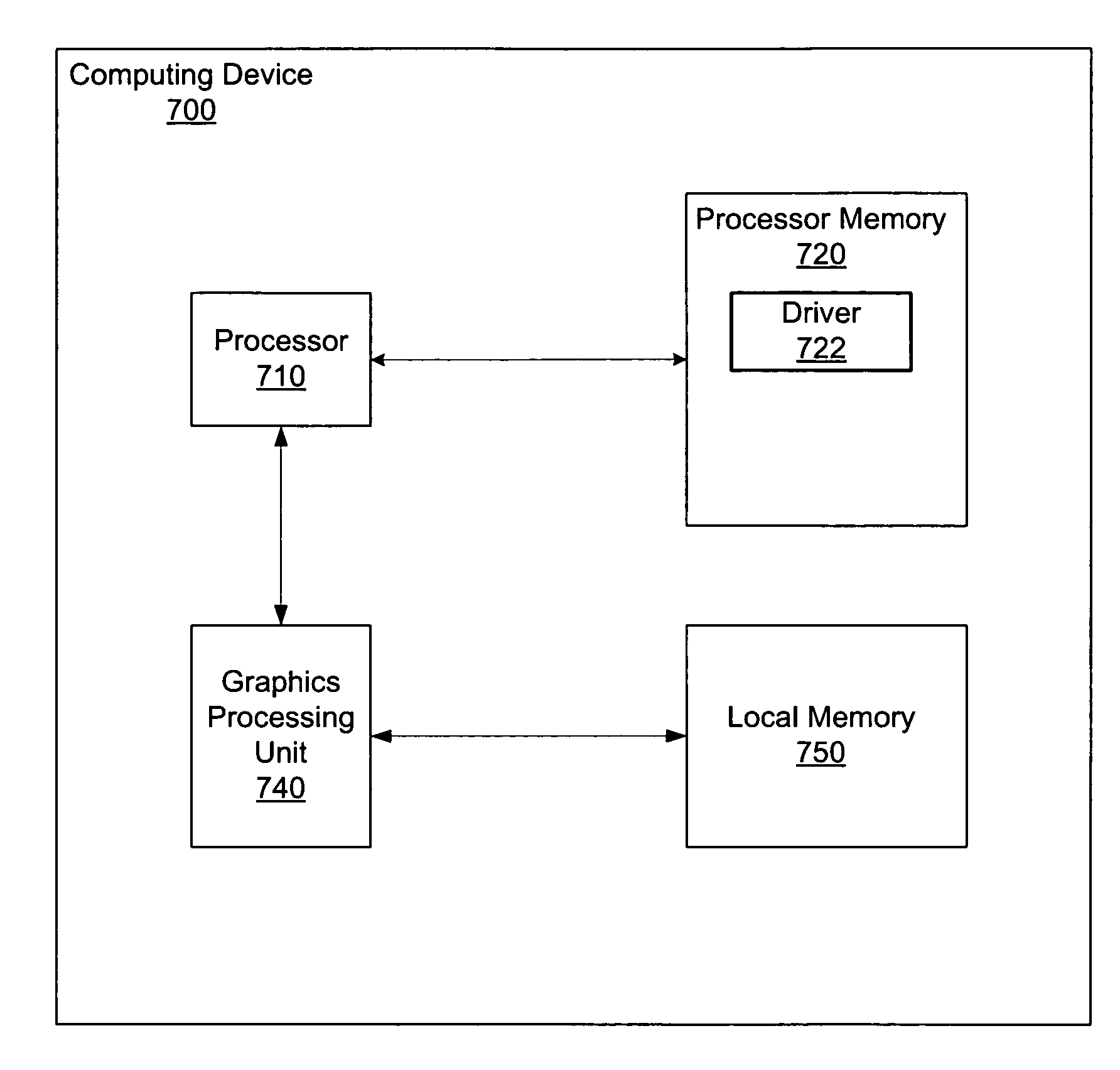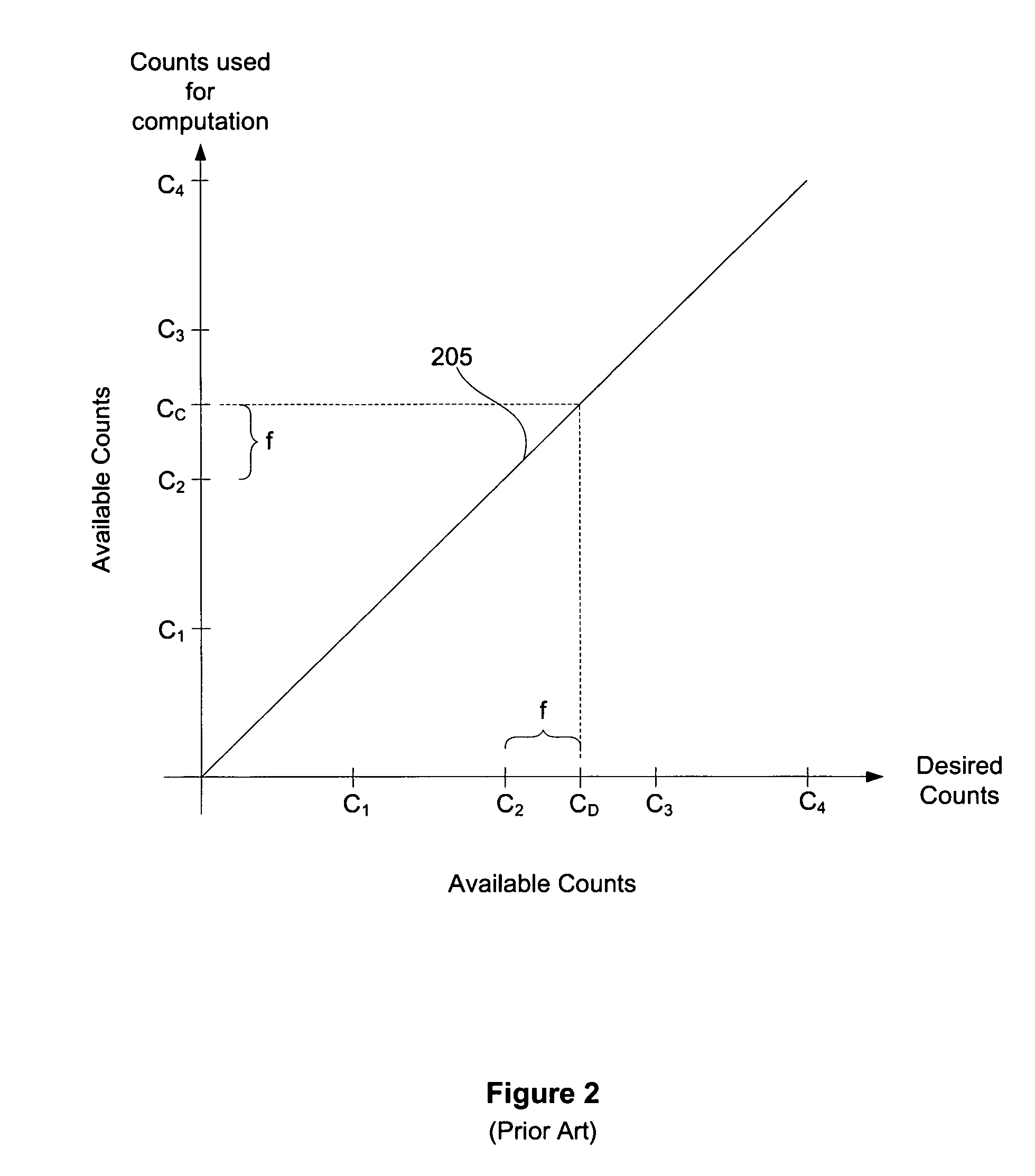Anisotropic texture filtering optimization
a texture filtering and optimization technology, applied in the field of computer graphics, can solve the problems of reducing the performance attributable to including the additional bilerps, reducing and reducing the performance of the additional bilerps. the effect of increasing the image quality, reducing performance, and optimizing the number of bilinear samples
- Summary
- Abstract
- Description
- Claims
- Application Information
AI Technical Summary
Benefits of technology
Problems solved by technology
Method used
Image
Examples
Embodiment Construction
[0027]FIG. 4A illustrates a graph of a function 405 used to compute a modified bilerp count, according to one embodiment of the present invention. Again, both axes of the graph include the bilerp counts available within a particular graphics system (C1, C2, C3 and C4). The desired bilerp count (CD) is shown along the x-axis, and a modified bilerp count (CM) is shown along the y-axis. Function 405 sets forth how the number of bilerps used to compute the texture value for a pixel is optimized by clamping the modified bilerp count to an integer value, corresponding to an available bilerp count, when the desired bilerp count falls within certain ranges. More specifically, the modified fractional distance (fm) associated with the modified bilerp count (CM) is clamped to zero when the fractional distance (f) associated with the desired bilerp count (CD) falls within specific, defined ranges. Once outside each of these ranges, the modified fractional distance (fm) transitions from zero to ...
PUM
 Login to View More
Login to View More Abstract
Description
Claims
Application Information
 Login to View More
Login to View More - R&D
- Intellectual Property
- Life Sciences
- Materials
- Tech Scout
- Unparalleled Data Quality
- Higher Quality Content
- 60% Fewer Hallucinations
Browse by: Latest US Patents, China's latest patents, Technical Efficacy Thesaurus, Application Domain, Technology Topic, Popular Technical Reports.
© 2025 PatSnap. All rights reserved.Legal|Privacy policy|Modern Slavery Act Transparency Statement|Sitemap|About US| Contact US: help@patsnap.com



